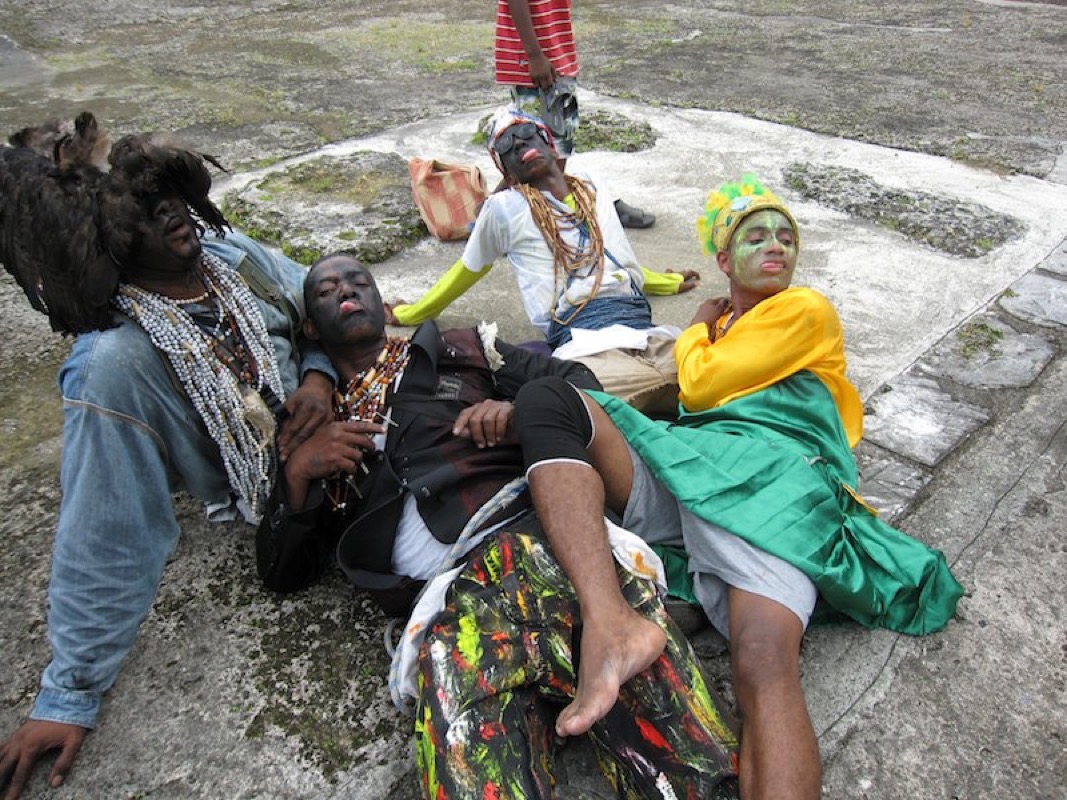Congos Posing For Pictures After Tourist Presentation (Photo by Oronike Odeleye)
As in Congo local performance when visitors are present, Congo men orchestrate the community’s like-local interaction with tourists by playing with them and leading them into the dance space. Just as they do in the evening local performances, male tourists sometimes interpret the attempted kiss of the dance as an opportunity to get too close to female Congo partners. Congo women help to police such deviant male tourist interaction within the space of local Congo performance by using the movement vocabularies advocated by the tradition. Congo men, on the other hand, use the mask of buffoonery to police male transgressors during like-local performances. At the first sign of inappropriate closeness, Congo men swoop in on male tourist transgressors, aggressively blow their whistles, and good naturedly dance-walk them back to the periphery of the performance space. Connecting the Black Diaspora tricksters Eshu Elegba (Yoruba of Nigeria), Anansi the Spider (Akan of Ghana), Brother Nanci (Anansi’s Caribbean name), and Brer Rabbit (United States), Arturo Lindsay (2003) asserts that such buffoonery “is simply a retention of the ruse enslaved Africans employed in order to be perceived as non-threatening” (138).
Excerpted from “Prologue” and “Chapter Two” of When the Devil Knocks: The Congo Tradition and the Politics of Blackness in 20th Century Panama, The Ohio State University Press (in press)

